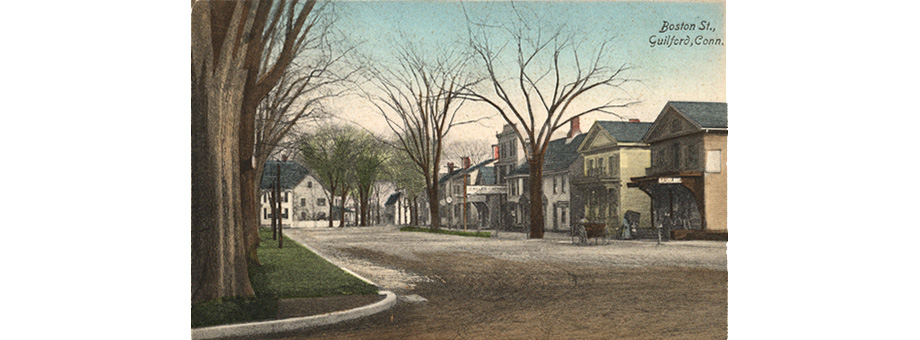LEADING LADIES OF THE 17TH, 18TH, 19TH, AND 20TH CENTURIES
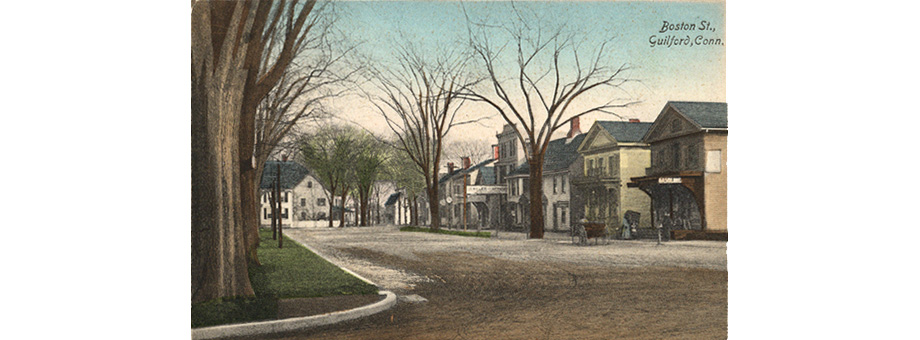
Dorothy Sheafe Whitfield (c. 1601-1669)
Dorothy Sheafe Whitfield was born to Thomas Sheafe, Doctor of Divinity, and his wife, Mary Wilson, around the turn of the 17th century in Cranbrook, Kent in England. Her father was a Canon of St. George’s Chapel, Windsor, and Vicar of the church at Welford, Berkshire. In 1618, Dorothy married the Reverend Henry Whitfield, Vicar of the church of St. Margaret at Ockley, Surrey. For nearly twenty years, Henry and Dorothy Whitfield lived the comfortable life of landed English gentry, raising a family of nine children together.
When King Charles I took the throne in the early 17th century, he determined to quell growing dissent within the Church of England. Although Rev. Whitfield initially conformed to the church’s teachings, he became increasingly influenced by Puritan leaders over time, eventually drawing formal censure for his views. Faced with religious persecution, Rev. Whitfield gathered 25 families, including his own, and emigrated to the New World in 1639.
In her late 30s, Dorothy Whitfield gave up a life of privilege in England, traveling three thousand miles across an ocean to help her husband establish a colony in what the colonists viewed as an untamed wilderness. They left London on a ship in June, 1639, and arrived in Connecticut in September of that year. The colonists quickly got to work building the Whitfield’s home, a large stone structure that not only housed their family but also served as a fortress for the whole community in times of need. Life in the fledgling Menunkatuck Plantation, which would later be renamed Guilford, depended on trade with the Menunkatuck Indians and followed the rhythms of daily subsistence and deep faith.
In 1650, during the Commonwealth Era ushered in after King Charles’ execution, Rev. Henry Whitfield and Dorothy returned to England to celebrate the triumph of religious freedom there. He died there in 1657, and she lived until 1669. While some of their children chose to live in England, others remained in the New World. Although Henry and Dorothy Whitfield stayed in Guilford only 11 years, they helped build a community that thrives today after nearly four centuries.
Wife, mother, devout Puritan, intrepid traveler… Dorothy Whitfield is one of the few 17th century women who traveled to the New World and back again. She knew the life of a fine lady, but also that of a determined woman on the doorstep of a new continent. That she could share such experiences with her curious homeland is nothing short of remarkable.
Agnes Dickinson Lee (1745-1830)
The American Revolution found its way to Guilford, dividing allegiances and testing the mettle of family and community even as a new nation was born. While the deeds of many townspeople are notable during this era, those of Agnes Dickinson Lee have become the stuff of legend. Documented in various histories, the version handed down through her family’s oral tradition and recorded by her great-great granddaughter, Laura Seward Carpenter, is most colorful.
Agnes Dickinson married Samuel Lee in 1763, and they raised a trio of girls in the house at 1 North Street. Samuel was a local leader whose military exploits earned him the rank of Captain by war’s end, and both husband and wife were staunch patriots.
Samuel’s duty was to guard the coast against contraband trade with the British. The west bedroom in their home held the goods he helped confiscate, keeping them out of the hands of local Tories. Because of this, Tories targeted their house frequently. Once, the quick-thinking Agnes stuffed confiscated lace, ribbons, buttons, and silk into a covered cooking pot, successfully tricking the Tories into thinking it was dinner. On another occasion, she placed herself in their path as they broke down her door, remaining there by sheer force of will until her brother-in-law returned to help her chase them off with firepower. Agnes and Samuel collected all manner of pewter and lead household objects necessary for melting into bullets for the war effort. Agnes is also remembered as a woman who bravely saved their home and hidden barrels of ammunition from an encroaching fire, and who fired the cannon to warn the town that the British had landed at Leete’s Island. According to family history, there were no men around to sound the alarm, “so it was Agnes who, to quote her own words ‘went out and blazed away,’ with the victorious result that the British were repulsed.”
Following the war, Samuel and Agnes Lee built the house that stands at 292 State Street, and Captain Lee served as a Connecticut legislator. The spirited Agnes Dickinson Lee lived well into her 80s, surrounded by her children and grandchildren. The Guilford chapter of the Daughters of the American Revolution is named for her.
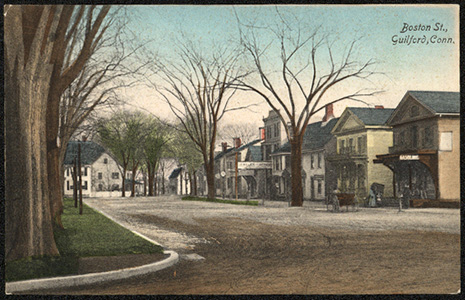
“Boston Street Postcard,” (date unknown), Guilford Free Library Archives
Sophia Fowler Gallaudet (1798-1877)
Sophia’s story is an inspiring tale both of perseverance and of a commitment to change lives through education. Sophia and her sister, Parnel, were born and raised near Guilford. Both deaf, they grew up with four hearing brothers. Sophia, described as a bright and charming young lady, learned to cook, sew, and manage a household, as was expected of ladies at that time.
In 1817, a man named Thomas Hopkins Gallaudet returned to Connecticut from Europe, where he had been studying methods of teaching deaf people. He was accompanied by a deaf Frenchman, Laurent Clerc, who helped him establish the American School for the deaf. Gallaudet and Clerc brought to the United States a method of teaching communication through hand signals, the basis for American Sign Language. Sophia’s father, Miner Fowler, learned of the school—the first of its kind in the United States. Sophia was 19 when she and her sister enrolled. Three years later, Sophia married Thomas Gallaudet. They raised 8 children and were married 30 years.
After her husband’s death in 1851, Sophia and one of their sons furthered his educational legacy. In 1857, she accompanied their youngest son, Edward Miner Gallaudet, to Washington, D.C., At age 20, he became principal for the Columbia Institution for the Deaf, and she served as Matron of the school, teaching classes and heading the department in which household skills were taught. Through the political and fundraising efforts of Sophia and her son, Edward, in 1864, the school became Gallaudet College, the first American college for the deaf. Sophia remained involved with the school until her death in 1877.
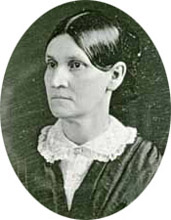
Doctor Elisabeth C. Adams (1905-1994)
Of the many women who made Guilford a better place in the 20th century, the one whose generous legacy shines the brightest is a tiny doctor from New York. When Elisabeth Adams came to town in 1950, she was 45 years old. She dedicated the second half of her life to making Guilford the kind of town in which everyone wants to live.
Officially, Doctor Adams served as Medical Examiner, Health Director, and Physician for the Police and Fire departments. These titles, while important, carry nary a glimpse of the energy and enthusiasm with which she served Guilford, but townspeople’s memories capture her perfectly… a diminutive figure racing to emergencies, almost unseen behind the wheel of her VW Beetle… a generous spirit delivering the groceries she bought weekly for families in need… a fearless perfectionist ensuring safety was never ignored on construction projects and fire scenes… a tireless supporter in the audience at soccer games and choir concerts… a friend to stay with people as they passed from this life to the next. In the late 1960s, Guilford honored Doctor Adams by naming a middle school after her. As with everything she did, she embraced the school wholeheartedly. For a quarter century, she penned personal notes to the honor roll students each marking period. Although Doctor Adams passed away in 1994, her legacy lives on at “her” school and in innumerable stories from the people whose lives she made better through her good works.
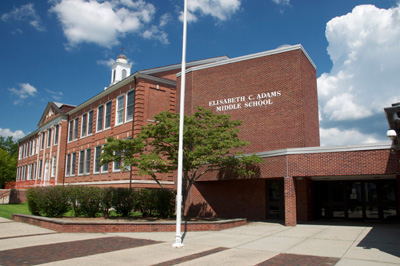
Elizabeth C. Adams Middle School, 233 Church Street
